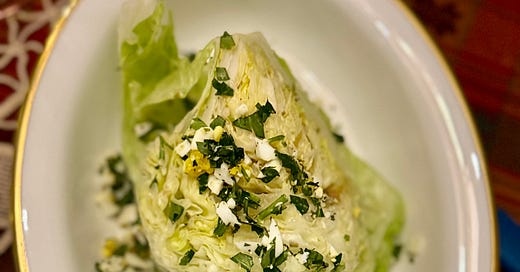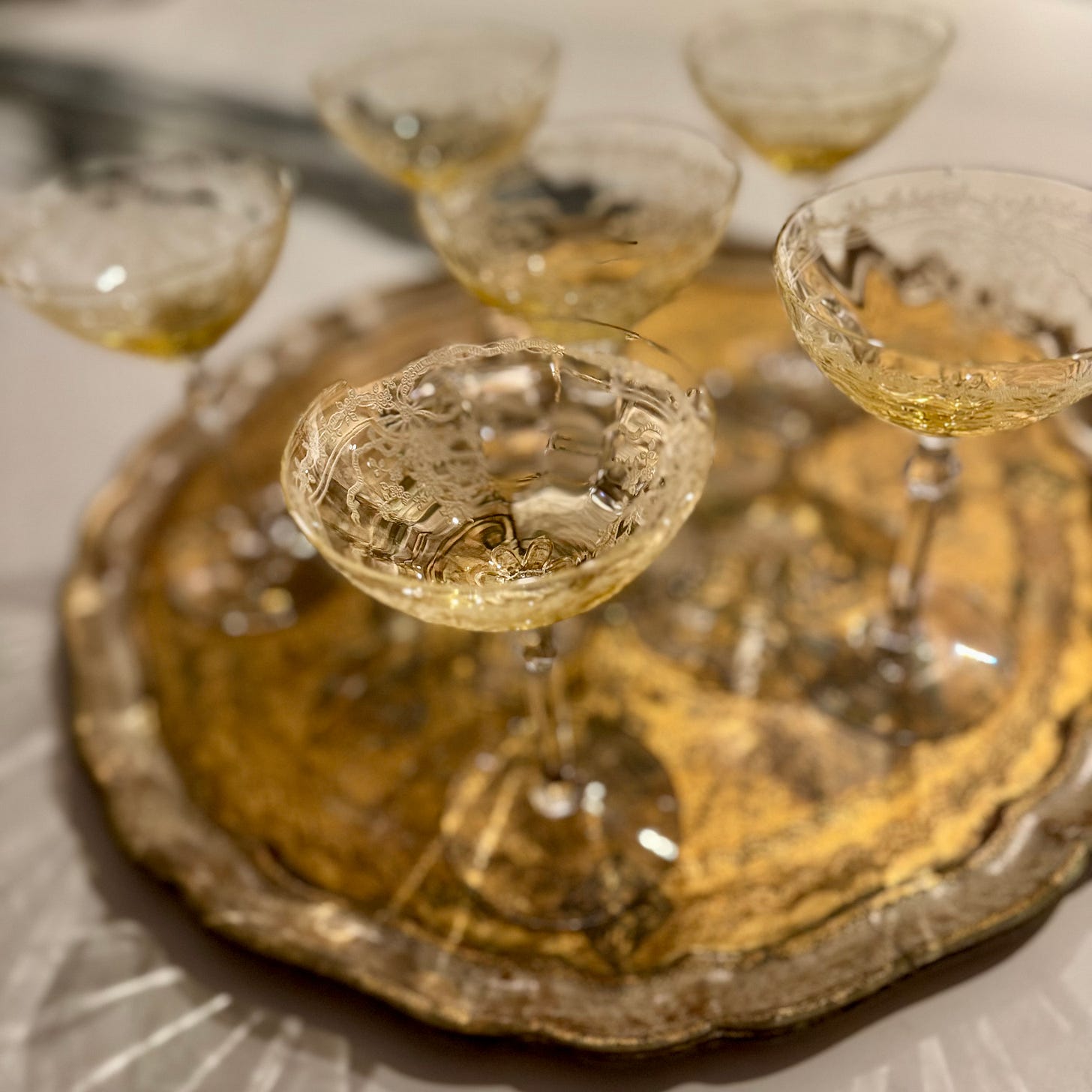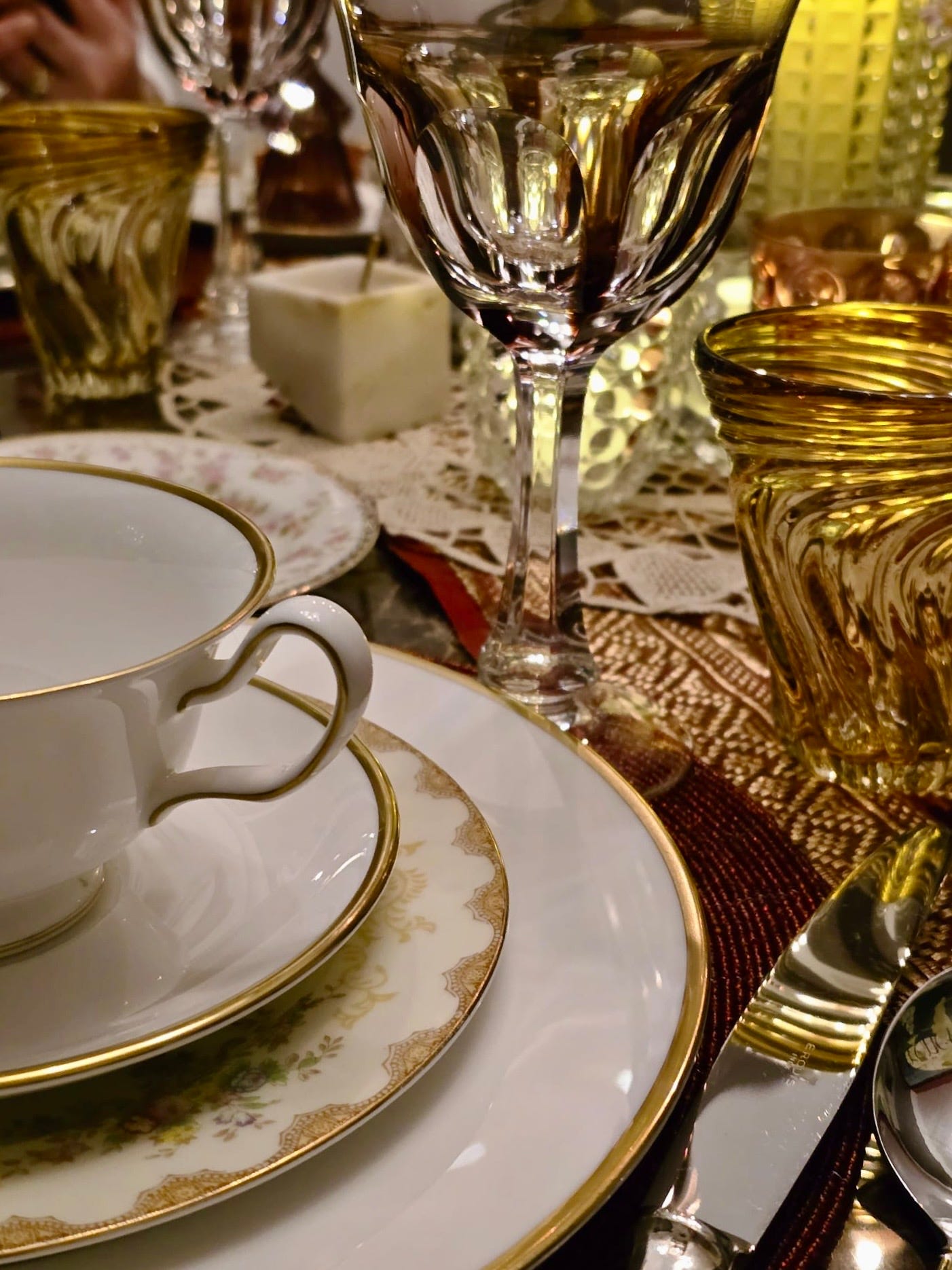I did not inherit my grandmother’s china.
Or my mother’s, for that matter. There was no fine china to be had, no gift registry for a service for 12, a tea set, silver plated flatware. Ours was a modest house, my parents Italian immigrants to a new country, orphans without parents themselves and only with a fledgling community of other Italians who made the endless journey across the Atlantic and landed in a strange place called Halifax.
When they got married in Windsor, Ontario in 1952, it was in the company of distant cousins twice removed, a maid of honour that my mother barely knew. Still, kinship was strong in this tribe of near-strangers, a shared language and culture creating deeper bonds in moments than are sometimes created in a lifetime.
The life they built wasn’t based on the usual foundations of the ready-made trousseau of bridal showers: the toaster and Pyrex dishes and bar set and punch bowl and electric frying pan. Slowly, over time, with thrift and planning and care, the necessities were acquired—only what was essential and what was made to last.
Precious few
Yet there were still some treasures amongst the pressure cooker and polenta pot.
A 12 inch exquisite presentation plate, featuring a delicate teal border adorned with a gold filigree, framing a centrepiece of intricate hand painted flowers. A set of deep burgundy fruit coupes, also rimmed with gold, with a matching serving bowl. Delicate ethereal crystal glasses, with a don’t-touch-me air. They lay in state in our china cabinet, prized possessions that were rarely used.
These cherished items loomed large in my mind, out of reach yet in constant view. I never questioned why they stayed behind those glass doors; in our small house with no modern conveniences, I somehow knew that these things were impractical, important and irreplaceable all at once.
Many years later, when the time came for my father to leave our family home, we three girls drew lots on the family heirlooms. I acquired the pretty plate, and immediately hung it on the wall of our kitchen. It was soon joined by my own fledging collection of travel mementos: plates from Italy, another from Turkey. And yes, I took the polenta pot too.
Heirlooms to call my own
As for me, there was no question about whether I would register for wedding gifts. Back in the day, we weren’t seeking experiences or a honeymoon fund or contributions to a house; our ambitions and desires were more focused, as was our guest list. With only 30 people in attendance at our wedding, this was not meant to be a bonanza score.
Still, those beautiful objects in my family home had captured my heart. When we chose our own precious lovelies, we eschewed practical stoneware for creamy white Wedgwood plates with an elegant gold rim; silver and gold stainless flatware; Riedel wine glasses. It was the beginning of a lifelong love affair with all the accoutrements that make any occasion special and memorable.
Those early gifts nurtured a growing love I had for objects from another time, when there was a utensil for every dish, and a dish for every purpose. I began to frequent flea markets, garage sales, auctions, picking up a set of Fostoria Champagne coupes here, a set of six Gien dessert plates there, a full set of Ercuis silverware at a flea market in France. Soon our cupboards were full to overflowing with these relics of a time gone by.
The attic of forgotten treasures
And yet, this love, the joy of surrounding ourselves with beauty and creating memories, has somehow been packed up and put away with the stamp collections, the old baby clothes, school yearbooks and concert ticket stubs. There is no currency left in the gilded plates, the pretty teacups. It seems we’d rather spend money on the cheap and cheerful and disposable, the items that can be thrown in the dishwasher or the garbage with equal ease.
Look, I know the arguments. Gold fades in the dishwasher. Silver tarnishes and who has time to polish it? It’s fussy and “not my style”. Here’s the newsflash. Plates are still functional without their original gold trim; silverware can be put in the dishwasher (just don’t put it next to stainless flatware!), and best of all, there are stories in those plates and knives and bowls and cups. Listen carefully—your past is whispering to you.
Use the good china
Years ago I was at a garage sale in my old neighbourhood. A woman had a box of old china for sale, a pretty pattern made in Czechoslovakia, tiny pink roses festooning plates and a soup tureen and cups and saucers and a ruffled platter amongst many items. As I stopped and picked up a plate to examine it, she casually offered that these had belonged to her grandmother.
My heart stopped. I pictured her grandmother, caring for these precious plates, mourning the loss of a cup or a plate to some careless accident. Of course I did what any sensible person would do. I bought the box.
Lest you think that the box is now languishing in some forgotten corner, far from it. Just tonight we had a sumptuous Sunday dinner, we two. It was time for the “good” china to come out. Richard’s grandmother’s plates were there too, along with the crystal glasses we bought in Prague, the water glasses from Japan, and yes, those pink rose plates from Czechoslovakia. If we do not celebrate every possible moment with grace and beauty, what else is left?
I sometimes wonder, and more frequently lately, where all my pieces will go. There is no child to inherit them and scant interest from the next generation. Still, I live in hope that there is another “me” somewhere—the person who picks up the plate, imagines the stories, revels in the beauty of a craftsmanship long gone.
Until then, I’ll be using the good china daily.
If you enjoy this weekly newsletter, please click on the ❤️ icon to like this post. This one gesture really helps to spread the word, and I appreciate it.
Salade mimosa
The French Chef Cookbook, Julia Child
serves 4 to 6
The start of a new year always seems to signal restraint, less butter, more gym time. If you’re looking for a fresh and easy salad to make any night of the week, might I suggest this winner from Julia Child? Julia may not be your first go-to for healthy eats—doesn’t butter make everything better?—but still, Julia is all about great taste and quality ingredients.
This salad hits the mark. While she calls for Boston lettuce or a mix of greens, I like to make an old-fashioned iceberg wedge salad. It looks just right in my 35 year old wedding plates.
Ingredients
Vinaigrette
Yields about 1/3 cup, enough for a salad for 6
1 to 2 tablespoons excellent wine vinegar, or a combination of vinegar and lemon juice
⅛ teaspoon salt
¼ teaspoon dry mustard
6 to 8 tablespoons best-quality olive oil
Pinch of freshly ground pepper
Optional: ½ tablespoon minced shallots or scallions, fresh herbs (like tarragon or basil)
Combine all the ingredients in a small Mason jar. Fasten lid and shake vigorously until the ingredients are combined and emulsified. Adjust seasoning to taste.
For the salad
1 peeled hard-boiled egg
2 to 3 tablespoons fresh green herbs (parsley, tarragon, etc.)
Salt and pepper, to taste
A large head of Boston lettuce, a mixture of greens, separated, washed, and dried or a head of iceberg lettuce, cut into wedges
⅓ to ½ cup vinaigrette (see recipe above)
Finely chop the hard-boiled egg. Chop or finely mince the fresh herbs. Combine with the egg.
Toss the greens in a salad bowl with the vinaigrette until well coated.
Just before serving, sprinkle the greens with the egg and fresh herbs mixture. Serve immediately.










Oh, Elizabeth. This was so beautiful and a reminder I need often. I am a keeper/saver, and aspire to be more of a user/enjoyer. Thank you for such inspiration. xx
Beautiful reflections on mementos, heritage, treasuring… the present moment.
Yes, there will be another “me” / “you” who will treasure your treasures. 💕